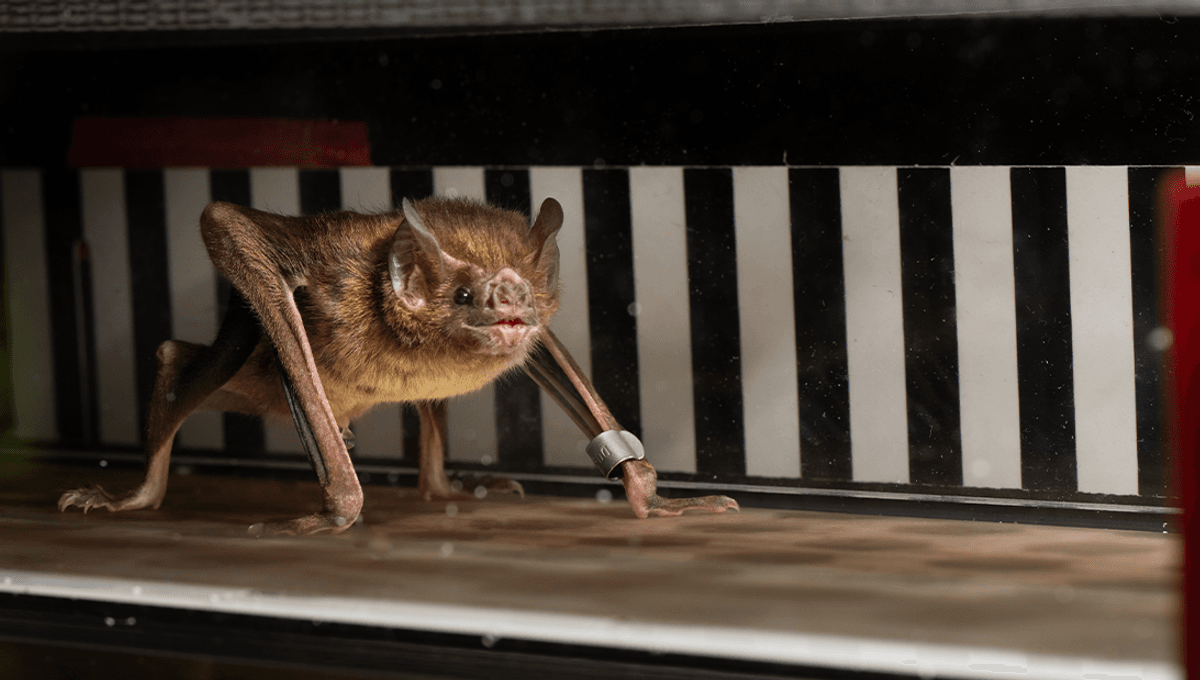
Vampire bats might have developed a creepy reputation with all the eating blood and flapping about at night, but their ability to survive off an entirely blood-based diet is part of what makes them so remarkable. Now, new research has taken a look at just how this diet can power vampire bats, and set them running on a treadmill to find out more.
Most animals burn carbs and fats to support them throughout their daily activities. However, vampire bats (Desmodus rotundus) are pretty unique as they feed entirely on blood as their food source and are one of only three species of mammalian obligate sanguinivores.
Having a blood diet is interesting, as it is very high in protein (and therefore amino acids) rather than fats and sugars like other mammals’ diets. The researchers behind this new study wanted to find out what kind of amino acids the bats were burning during exercise and discover more about how the bats’ metabolism works, comparing it to a group of insects that also feed entirely on blood in a process known as convergent evolution.
Thankfully, Dr Rossi was up to the challenge and used duct tape (what else?) to patch up most of these holes and thwart the efforts of the vampires to cheat!
Dr Kenneth Welch
While a bat study might make you think of flying, vampire bats have another trick up their sleeves, and it involves a pretty remarkable running ability. This allows the bats to hunt their prey along the ground, but also means they can fit on treadmills meant for rodents – though not without a few modifications.
“Vampire bats are exceptionally smart, clever little animals. Our metabolic treadmill was designed for rats, originally. Therefore, it had lots of little holes perforating the upper portions of the interior of the chamber walls (to promote airflow),” paper co-author Dr Kenneth Welch, Associate Professor at the University of Toronto Scarborough, told IFLScience.
“A rat likely wouldn’t have noticed these. But, with their long forelimbs and large thumbs, the vampires could easily reach up and grab onto those holes in order to avoid having to spend the effort to actually walk on the treadmill belt. They’re lazy like most of us and won’t do the work if they don’t have to. Thankfully, Dr Rossi was up to the challenge and used duct tape (what else?) to patch up most of these holes and thwart the efforts of the vampires to cheat!”
The researchers captured 24 bats in Lamanai Archeological Reserve in Lamanai, Orange Walk District, Belize (all the bats were released back where they were captured at the end of the experiment). To measure how the bats were using the amino acids, the team got them to run on the treadmills at three speeds: 10, 20, and 30 meters per minute. Before each running session, the bats were given a blood meal containing either normal cow’s blood as a control, blood enriched with isotopically labeled glycine (a non-essential amino acid), or leucine (an essential amino acid).
“Glycine and leucine are simply two convenient choices. Glycine is a non-essential amino, while leucine is. Essential amino acids are ‘essential’ to us because we cannot natively make them. We must get them from our diet. So, we chose a representative example of each type and wondered if, even to a vampire bat with its VERY protein rich diet, are essential amino acids more precious as substrates for building proteins/enzymes and not to be as extensively used as non-essential amino acids MIGHT be used for exercise fuel,” continued Welch.
The team then measured the bats’ breath as they were running. They looked at the carbon content in the exhaled breath and found that they were running off the amino acids from the recent blood meals, rather than any stored carbohydrates within the body during their time on the treadmill.
It’s too easy to demonize vampire bats. But they are intelligent, social little animals.
Dr Kenneth Welch
The team found higher oxygen consumption and carbon dioxide production with an increase in speed, but did not find a significance between the amino acids given to the bats. The blood meals were providing up to 60 percent of the energy needed to run on the treadmill, meaning they can convert their recent feeds to energy very quickly within the body.
“Essential amino acids are ‘essential’ to us because we cannot natively make them. We must get them from our diet. This is presumably true for vampire bats as well, and we wondered if they would rely on both similarly. It could have been possible that the pathway for breaking one amino acid down can be run at higher rates than others, such that one type might have been more favored at the highest speeds, compared to the lowest. But this is not what we have thus far seen,” explained Welch.
While the blood meals can be converted into energy in record time, it does have a downside in that the bats are running on very little reserves or stores of energy and are therefore vulnerable to starvation. It’s a surprising side effect of their unique diet, as Welch explains: “How powerfully WHAT you eat can shape WHAT you burn, and just how flexible mammalian physiology can be in meeting unusual physiological challenges, and the opportunities that come from dietary specialization.”
However, the vampires are social creatures and will often regurgitate blood to feed a hungry member of the group. In this way, the bats can stay full, ready for their next flight – or even run at getting more blood.
“It’s too easy to demonize vampire bats. But they are intelligent, social little animals that have been playing a key part in tropical ecosystems for millions of years. Why fear something when you can understand it better and marvel at its diversity and complexity?”
The paper is published in the journal Biology Letters.
Source Link: Watch Blood-Fuelled Vampire Bats Running On A Tiny Treadmill For Science